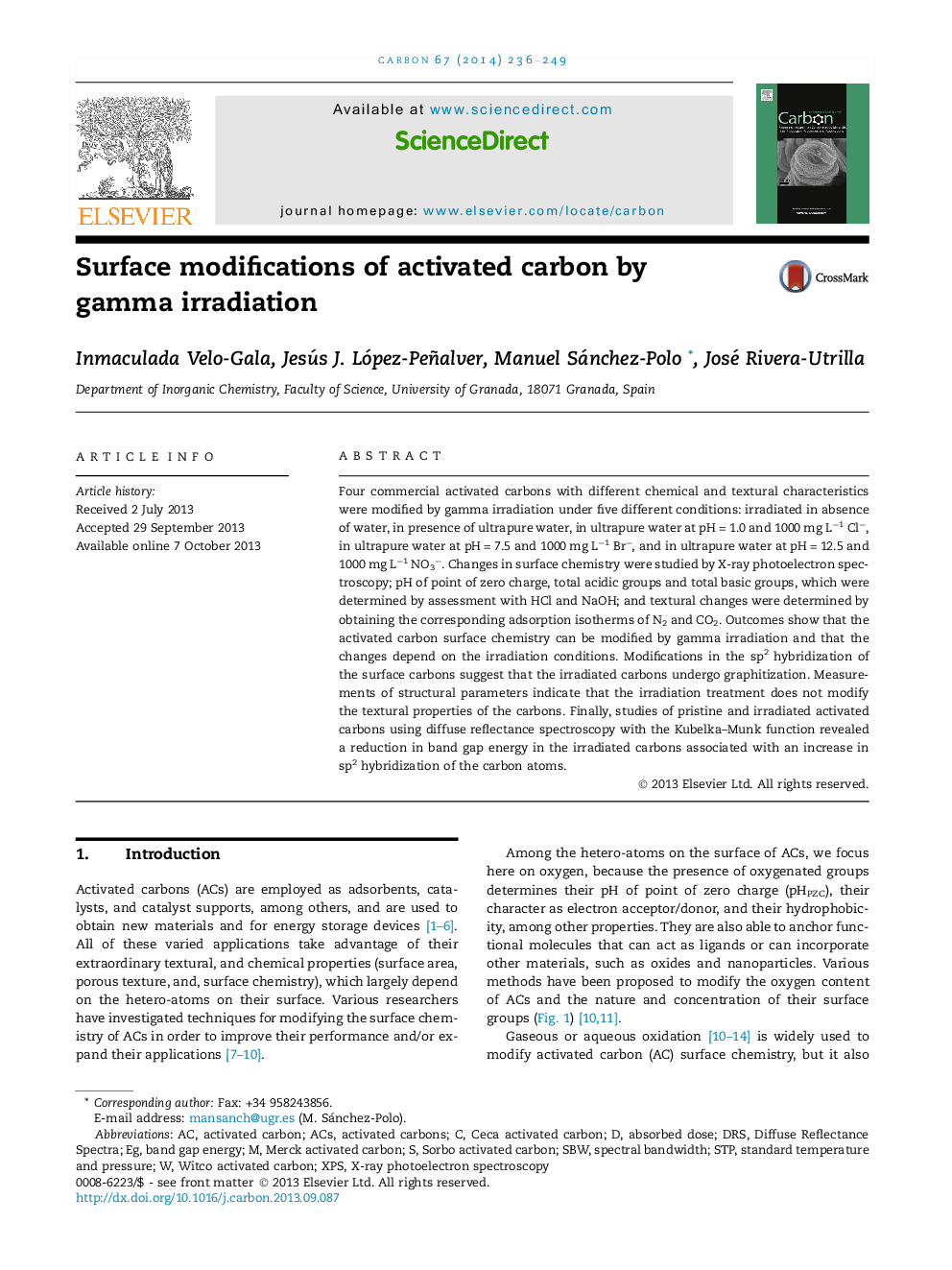| Article ID | Journal | Published Year | Pages | File Type |
|---|---|---|---|---|
| 7854959 | Carbon | 2014 | 14 Pages |
Abstract
Four commercial activated carbons with different chemical and textural characteristics were modified by gamma irradiation under five different conditions: irradiated in absence of water, in presence of ultrapure water, in ultrapure water at pH = 1.0 and 1000 mg Lâ1 Clâ, in ultrapure water at pH = 7.5 and 1000 mg Lâ1 Brâ, and in ultrapure water at pH = 12.5 and 1000 mg Lâ1 NO3â. Changes in surface chemistry were studied by X-ray photoelectron spectroscopy; pH of point of zero charge, total acidic groups and total basic groups, which were determined by assessment with HCl and NaOH; and textural changes were determined by obtaining the corresponding adsorption isotherms of N2 and CO2. Outcomes show that the activated carbon surface chemistry can be modified by gamma irradiation and that the changes depend on the irradiation conditions. Modifications in the sp2 hybridization of the surface carbons suggest that the irradiated carbons undergo graphitization. Measurements of structural parameters indicate that the irradiation treatment does not modify the textural properties of the carbons. Finally, studies of pristine and irradiated activated carbons using diffuse reflectance spectroscopy with the Kubelka-Munk function revealed a reduction in band gap energy in the irradiated carbons associated with an increase in sp2 hybridization of the carbon atoms.
Keywords
Related Topics
Physical Sciences and Engineering
Energy
Energy (General)
Authors
Inmaculada Velo-Gala, Jesús J. López-Peñalver, Manuel Sánchez-Polo, José Rivera-Utrilla,
